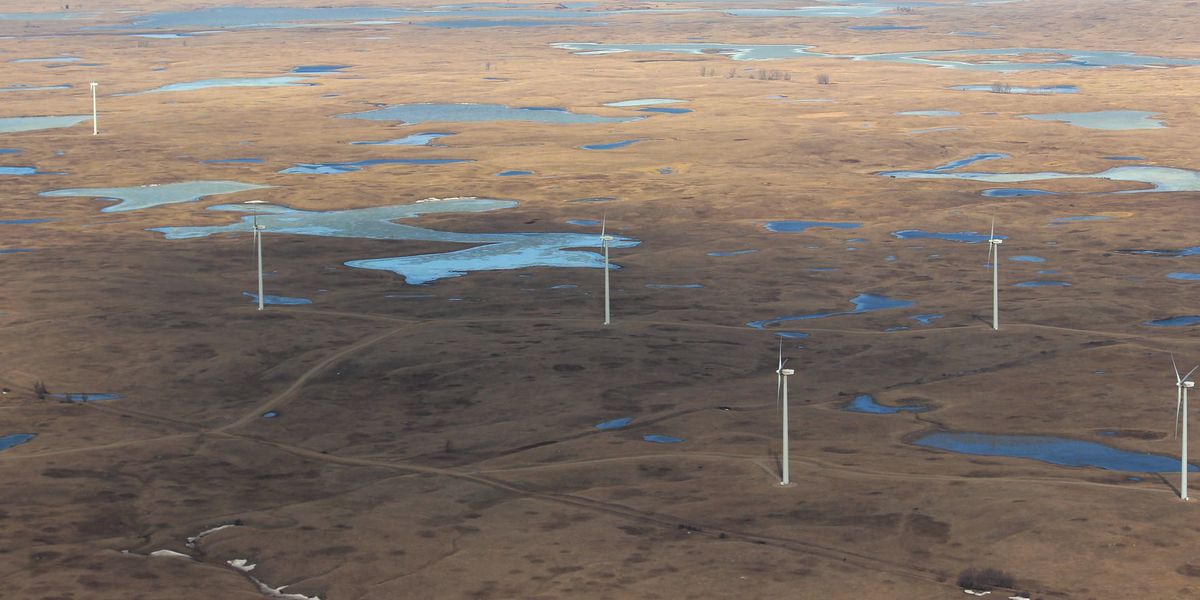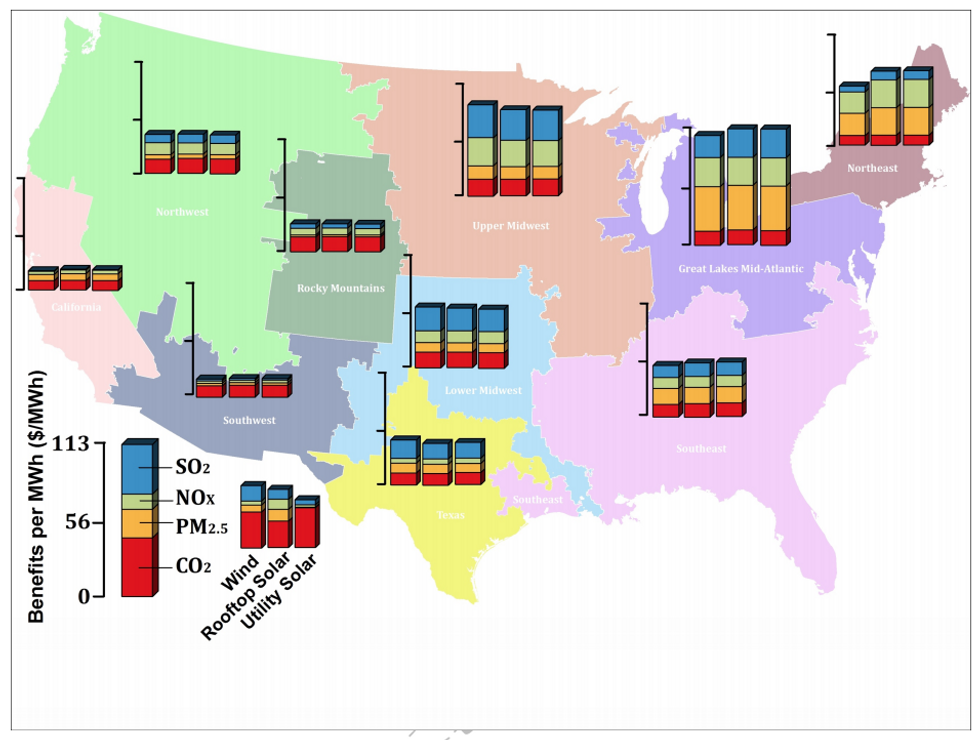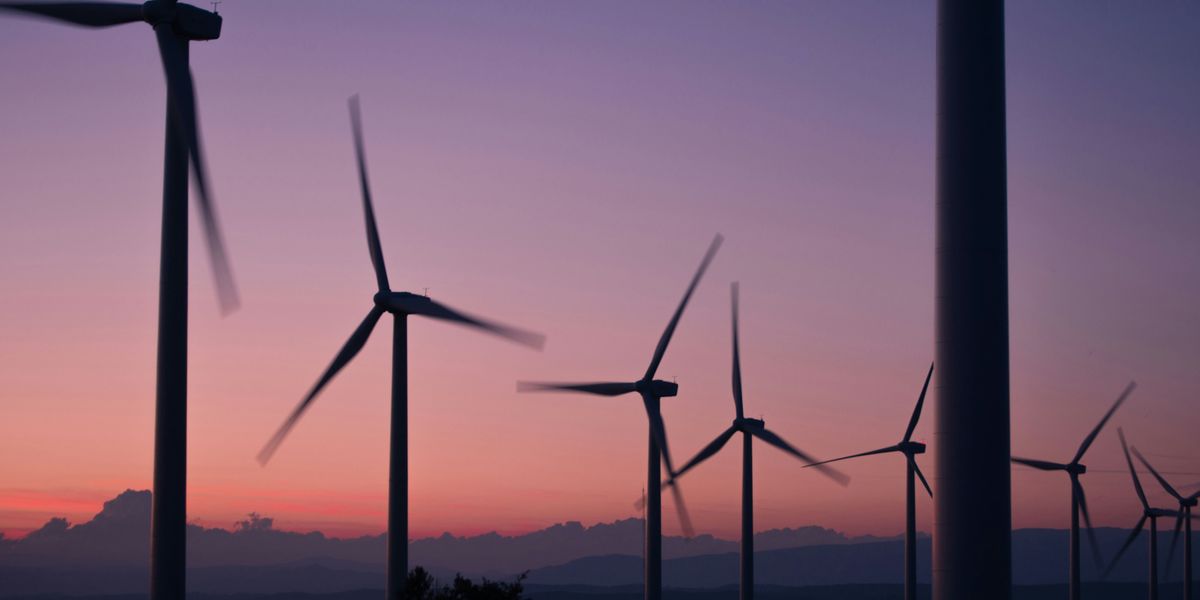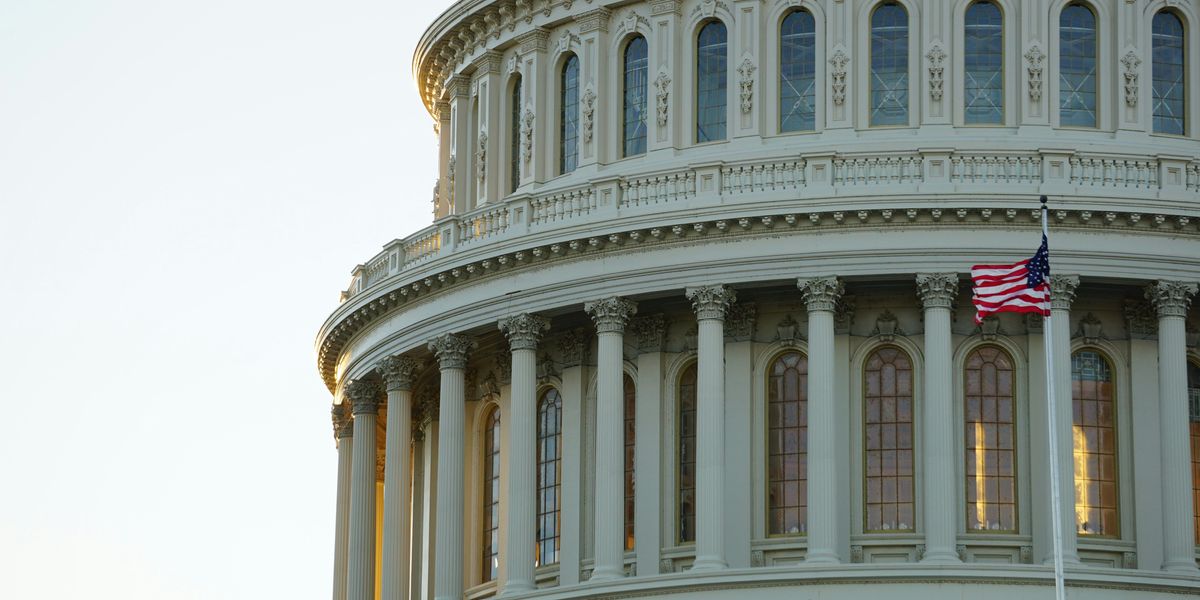
Renewables could be a health boon for Great Lakes, Upper Midwest regions
Harvard analysis pinpoints where renewables would have the most bang for their buck
Installing more wind turbines in the Upper Midwest, and more solar panels in the Great Lakes and Mid-Atlantic regions, would bring the largest health gains and benefits from U.S. renewable energy, according to a new Harvard University analysis.
The Upper Midwest—which, in this study, spans roughly from the Dakotas to the Western Upper Peninsula in Michigan down to Missouri — would reap an estimated $2.2 trillion in health and social gains from adding about 3,000 megawatts of wind power, which translates to about $113 in benefits per megawatt hour. Deploying the same amount of solar capacity in the Great Lakes/Mid-Atlantic region—spanning from Indiana to Northern Michigan then east to New York—brought about the same amount of health benefits.
"To ensure that climate policies are cost-effective, the location where renewables are built is much more important than the specific technology," said Drew Michanowicz, a study author and a research fellow at the Center for Climate, Health, and the Global Environment at the Harvard T. H. Chan School of Public Health, said in a statement.
"If you want to get the biggest bang for your buck in terms of the health and climate benefits of renewables, investing in the Upper Midwest and Great Lakes regions will keep populations downwind healthier while also taking important steps to decarbonize," he added.

The researchers examined 10 regions in the U.S. and calculated what varying amounts of renewable energy added would mean for the amount of carbon dioxide emissions avoided, and for health benefits, including reductions in premature deaths from air pollution, as well as reduced climate change impacts to health from drought, extreme weather, displacement, sea level rise, farming problems and diseases.
The major take-homes from the study: when health benefits are considered, renewable energy is more cost effective than installing emissions reduction technology (such as carbon capture) at exiting coal and gas plants; and, just like real estate, when it comes to clean energy — it's all about location, location, location.
Location matters because in areas that currently use a lot of coal, such as the Upper Midwest and Great Lakes regions, renewable energy will create a lot more health benefits than in places using more natural gas and that have more renewables already on the grid.
In the modelling, "the highest amounts of coal were displaced in the Great Lakes, Upper Midwest, Lower Midwest and Rocky Mountains," the authors wrote. "These regions also generally tended to have higher climate and health benefits."
For example, they found that the health benefits for added renewable capacity for people in the Upper Midwest are about four times higher than in California.
The authors hope the study, and the modeling they use, can be used by policymakers, officials and energy companies to "maximize carbon dioxide reductions and health benefits" when deciding where to install renewable energy.
"This tool can help state and national policymakers design better climate plans by understanding where to build wind and solar, while also helping private groups, like utilities, renewable energy developers, and even investors, decide where to deploy their resources to maximize the gains from renewable energy," said Jonathan Buonocore, the lead author and a research associate at the Center for Climate, Health, and the Global Environment at the Harvard T. H. Chan School of Public Health, in a statement.
"By tackling the root causes of climate change, we can address our nation's most pressing health problems at the same time," he added.
See the full study at Environmental Research Letters.













